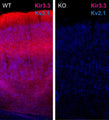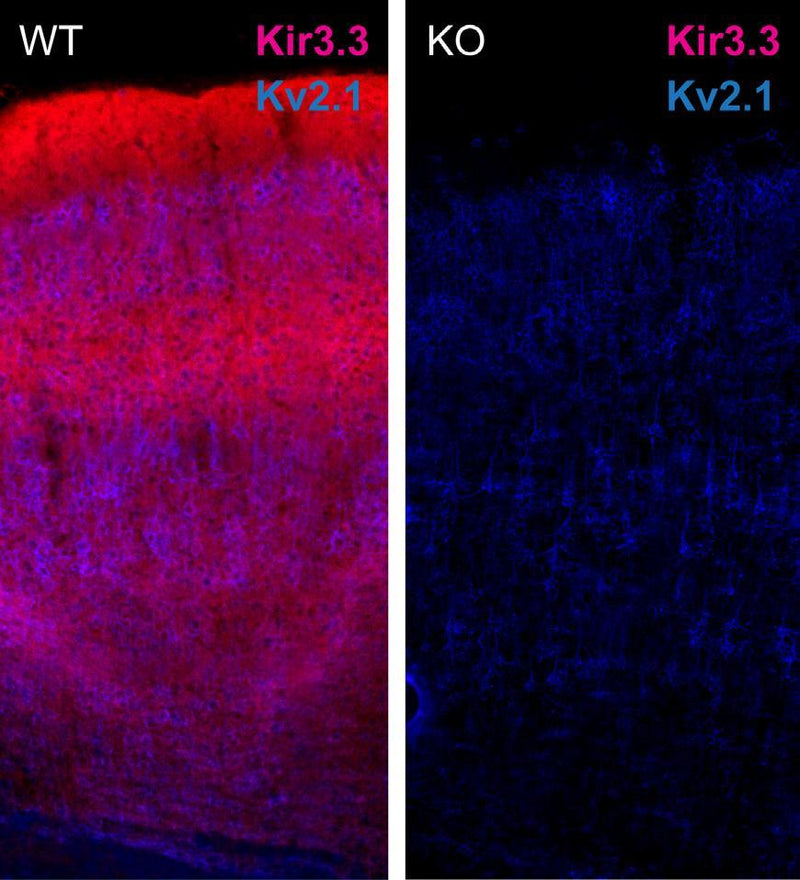Anti-Kir3.3 Antibody (N455/15)
Our Anti-Kir3.3 mouse monoclonal primary antibody from NeuroMab is produced in-house from hybridoma clone N455/15. It is KO validated, detects human, mouse, and rat Kir3.3, and is purified by Protein A chromatography. It is great for use in IHC, ICC, WB.
Human, Mouse, Rat
ELISA, ICC, IHC, WB
Mouse
SKU: 75-445
Ships: 1-2 business days
Product Details
Kir3.3
Potassium inwardly rectifying channel subfamily J member 9 is encoded by the gene KCNJ9. KCNJ9 is a member of the inward rectifier-type potassium channel (TC 1.A.2.1) family, KCNJ9 subfamily. KCNJ9 is an integral membrane protein and inward-rectifier type potassium channel, which has a greater tendency to allow potassium to flow into the cell rather than out of the cell. KCNJ9 is controlled by G-proteins and associates with another G-protein-activated potassium channel to form a heteromultimeric pore-forming complex. KCNJ9 is expressed in the brain and skeletal muscle. Diseases associated with KCNJ9 include Pendred Syndrom and Seizures, Sensorineural Deafness, Ataxia, Mental Retardation, and Electrolyte Imbalance.
Purified by Protein A chromatography
1 mg/mL
Monoclonal
N455/15
IgG2a
ELISA, ICC, IHC, WB
Mouse
Kcnj9 Girk3
40 kDa
Fusion protein amino acids 1-21 and 341-393 (fusion of cytoplasmic N- and C-termini) of mouse Kir3.3 (accession number P48543) produced recombinantly in E. Coli
Mouse
Human, Mouse, Rat
AB_2686912
Aliquot and store at ≤ -20°C for long term storage. For short term storage, store at 2-8°C. For maximum recovery of product, centrifuge the vial prior to removing the cap.
Liquid
Produced by in vitro bioreactor culture of hybridoma line followed by Protein A affinity chromatography. Purified mAbs are >90% specific antibody.
10 mM Tris, 50 mM Sodium Chloride, 0.065% Sodium Azide pH 7.125
Unconjugated
No cross-reactivity reported
Each new lot of antibody is quality control tested by western blot on rat whole brain lysate and confirmed to stain the expected molecular weight band.
These antibodies are to be used as research laboratory reagents and are not for use as diagnostic or therapeutic reagents in humans.
United States
24 months from date of receipt
Inward rectifier K(+) channel Kir3.3 (Potassium channel, inwardlyrectifying subfamily J member 9) (G protein-activated inward rectifier potassium channel 3) (Kcnj9) (Girk3)
Shipped on ice packs





